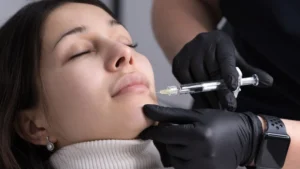Have you ever wondered, “Why do my gums hurt when I brush my teeth?” It’s not uncommon to experience discomfort while caring for your teeth. Taking care of your gums and teeth is not just about having a bright smile; it’s vital for your overall well-being. Imagine if every time you brushed your teeth, your gums hurt.
This can discourage regular brushing, leading to more oral problems. In this article, we’ll uncover the reasons behind gum pain during brushing and provide simple solutions to make your oral care routine more comfortable. Let’s explore how you can maintain a pain-free brushing experience and keep your gums healthy.
The Importance of Oral Hygiene
Maintaining good oral hygiene isn’t just about having fresh breath and a shiny smile. It plays a crucial role in your overall health and well-being.
Your mouth is a gateway to your body, and the condition of your gums and teeth can affect various aspects of your health.
Healthy Gums, Healthy Body
Gum health is linked to your body’s health. Poor oral hygiene can lead to gum diseases, like gingivitis, which is an early stage of gum disease.
When your gums are inflamed and painful, it can cause discomfort and affect your ability to eat and speak comfortably.
Preventing Dental Issues
Regular brushing and flossing help remove food particles and plaque, a sticky film of bacteria, from your teeth.

Read Also: Does Vaping Make Your Teeth Yellow?
If plaque isn’t removed, it can turn into tartar, which can lead to cavities and gum disease. Keeping your teeth clean prevents these problems from developing.
Averting Systemic Complications
Neglecting oral hygiene can have broader health implications. Gum diseases are associated with conditions such as diabetes, heart disease, and even complications during pregnancy. Bacteria from oral infections can enter the bloodstream and affect other parts of your body.
Boosting Confidence and Social Interaction
A healthy mouth contributes to your self-esteem. When you have fresh breath and a clean smile, you’re more likely to feel confident in social situations.
Good oral hygiene also helps you communicate effectively, without worrying about bad breath or visible dental issues.
Why Do My Gums Hurt When I Brush My Teeth?
Experiencing gum pain while brushing can be concerning, but there are various reasons behind this discomfort. Let’s delve into the potential causes of why your gums might hurt during brushing.
Gingivitis: The Culprit Behind Gum Sensitivity
Gingivitis is a common cause of gum pain during brushing. It’s an early stage of gum disease characterized by inflammation and redness of the gums.
When plaque—a sticky film of bacteria—accumulates on your teeth, it can irritate your gums and cause tenderness. Proper brushing and flossing can help prevent gingivitis and alleviate gum pain.

Aggressive Brushing: Handle with Care
Brushing your teeth with excessive force can lead to gum pain. The bristles of your toothbrush might cause irritation and even minor cuts on your gums.
Remember, a gentle touch is more effective in removing plaque without causing harm.
Read Also: If I Stop Vaping will My Gums Heal?
Improper Brushing Technique: Getting It Right
Using the right technique while brushing is crucial. If you’re not holding your toothbrush at the correct angle or if you’re moving it too vigorously, you could inadvertently cause gum discomfort. Learning the proper brushing technique can make a noticeable difference.
Tooth Sensitivity: A Nerve-Induced Discomfort
If you experience sharp pain when brushing, you might have tooth sensitivity. This occurs when the protective layer of your teeth, called enamel, wears down, exposing the underlying sensitive nerves.
Using a toothpaste designed for sensitive teeth and a soft-bristle brush can help alleviate this discomfort.
Dental Appliances: An Additional Challenge
Wearing dental appliances like braces or dentures can contribute to gum pain while brushing. The hardware might create pressure points or cause friction against your gums. Extra care and a modified brushing technique can minimize this discomfort.
Tips for Preventing Gum Discomfort
To ensure a comfortable brushing experience and keep your gums healthy, consider these practical tips that can help prevent gum pain.
Gentle Brushing: Softness is Key
Choose a toothbrush with soft bristles. Brushing with a gentle touch is effective in removing plaque without causing irritation. Remember, it’s not about scrubbing hard, but about thorough and careful cleaning.
Proper Technique: Brushing 101
Hold your toothbrush at a 45-degree angle to your gums. Use short, back-and-forth strokes and be sure to brush the front, back, and top surfaces of each tooth.
Pay extra attention to where your gums meet your teeth, as this area is prone to plaque buildup.
Regular Dental Check-ups: Professional Care Matters
Schedule regular visits to your dentist. Professional cleanings help remove plaque and tartar that can contribute to gum discomfort.
Your dentist can also provide personalized advice for maintaining gum health.
Read Also: Does Vaping Make You Lose Weight?
Sensitivity Toothpaste: Tailored Relief
If you have tooth sensitivity, consider using toothpaste formulated for sensitive teeth. These toothpaste contain ingredients that help block pain signals from reaching the nerves, providing relief while brushing.
Addressing Dental Appliances: Extra Care Needed
If you wear braces, dentures, or other dental appliances, take extra care while brushing. Use interdental brushes or floss threaders to clean between wires and brackets. Your dentist or orthodontist can guide you on the best approach.
Conclusion
In conclusion, understanding and addressing the reasons behind gum pain while brushing is essential for maintaining oral health and overall well-being.
Whether it’s due to gingivitis, aggressive brushing, improper technique, tooth sensitivity, or dental appliances, there are practical steps you can take to alleviate discomfort and ensure a pain-free brushing experience.
Remember, gentle brushing with a toothbrush featuring soft bristles, adopting the correct brushing technique, and using sensitive toothpaste if needed, can significantly improve your oral care routine.
Regular dental check-ups play a vital role in preventing gum issues, while special attention to dental appliances ensures their compatibility with your gums.
By following these tips and seeking professional advice when necessary, you can enjoy a comfortable brushing routine and promote the health of your gums and teeth.
Your oral health is an integral part of your overall wellness, so make it a priority.
FAQS
Q1: Can gingivitis cause gum pain during brushing?
A: Yes, gingivitis, characterized by gum inflammation, can lead to sensitivity and discomfort while brushing.
Q2: How can I brush without causing gum pain?
A: Choose a soft-bristle toothbrush, hold it at a 45-degree angle, and use gentle, back-and-forth motions.
Q3: What if I have tooth sensitivity?
A: Consider using sensitive toothpaste and a soft brush. These can help reduce discomfort caused by exposed nerves.
Q4: Why do dental appliances contribute to gum pain?
A: Dental appliances like braces or dentures can create pressure points or friction against your gums, causing pain.
Q5: How often should I visit the dentist?
A: Regular dental check-ups every six months help remove plaque and tartar, promoting gum health.
Q6: Can aggressive brushing harm my gums?
A: Yes, brushing too hard can lead to gum irritation, so a gentle approach is recommended.
Q7: Is it normal to experience bleeding while brushing?
A: No, bleeding gums can indicate gum disease. Consult a dentist if bleeding persists.
Q8: Are there specific brushes for dental appliances?
A: Yes, interdental brushes and floss threaders can help clean around wires and brackets.
Q9: Can gum pain be a sign of a more serious issue?
A: Persistent gum pain might indicate underlying dental problems. Consult a dentist for proper evaluation and treatment.
Medical References
- Ainamo, J., & Bay, I. (1975). Problems and proposals for recording gingivitis and plaque. International Dental Journal, 25(4), 229-235.
- Chapple, I. L., & Van der Weijden, F. (2013). Do periodontal diseases affect general health? European Journal of Oral Sciences, 121(1), 1-4.
- Slot, D. E., & Van der Weijden, G. A. (2011). The efficacy of interdental brushes on plaque and parameters of periodontal inflammation: a systematic review. International Journal of Dental Hygiene, 9(3), 214-224.
- Zero, D. T., Brennan, M. T., Daniels, T. E., Papas, A. S., Stewart, C., Pinto, A., … & Frantsve-Hawley, J. (2016). Clinical practice guidelines for oral management of Sjögren disease: Dental caries prevention. Journal of the American Dental Association, 147(4), 295-305.
- Strassler, H. E., Drisko, C. L., Alexander, D. C., & Peck, S. R. (2013). Treatment of tooth hypersensitivity. Compendium of Continuing Education in Dentistry (Jamesburg, NJ: 1995), 34(2), 112.
- Cobb, C. M. (2012). Non-surgical pocket therapy: mechanical. Annals of periodontology, 1(1), 443-490.



